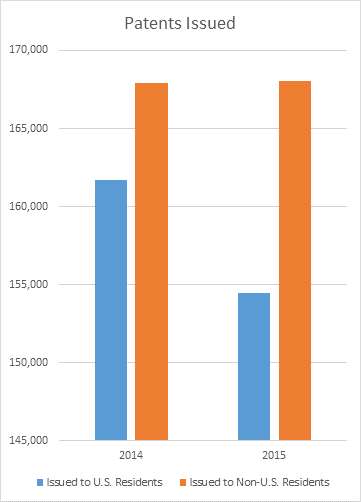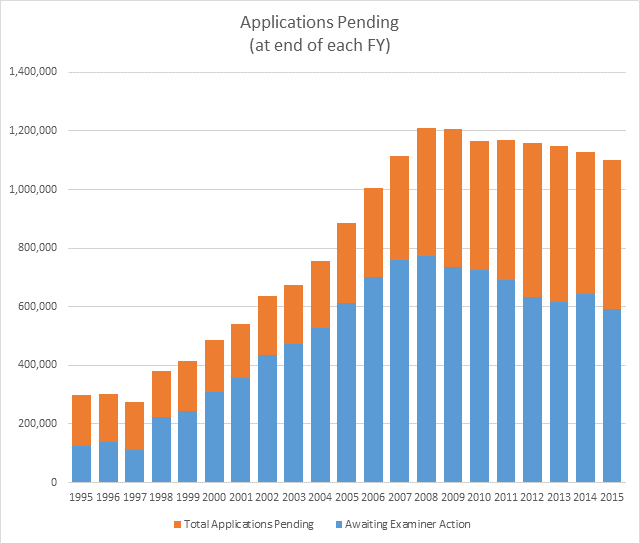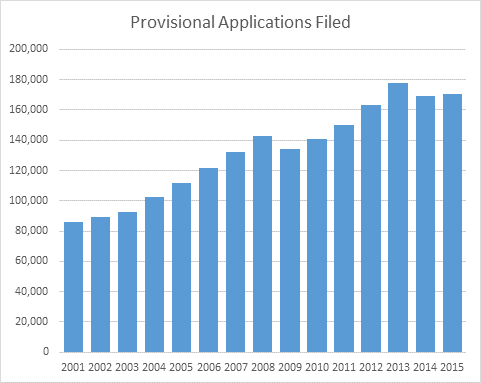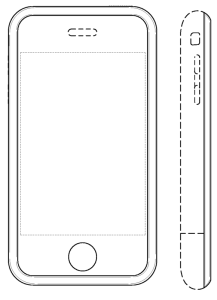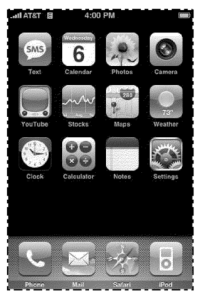by Dennis Crouch
This term the Supreme Court is addressing one patent issue,[1] that of enhanced damages.[2] Two cases have been joined together for a single one hour hearing. Merits briefing is ongoing. In an earlier post I briefly discussed the merits briefs that were filed in early December 2015. Now a set of friend-of-the-court briefs have also been filed either in support of the patentee-petitioners or in support of neither party. Respondent briefs as well as any briefs in support of respondent will be due in the upcoming weeks.
For the most part, the briefest stick to a model of focusing on a particular set of questions:
- Is willfulness a prerequisite to enhanced damages under section 284?
- Does the two-step test of Seagate create too high and too rigid of a standard?
- Is subjective bad faith sufficient for enhanced damages award?
- Should the District Court apply a totality of the circumstances test when determining enhanced damages?
- What level of proof is required: preponderance of evidence or clear and convincing evidence?
- When and enhanced damage award is appealed, what level of review should be applied?
The following is a short review of the amicus briefs that have been filed in the case.[3]
United States Government
When the United States government files and amicus brief, that brief is usually seen as the most important amicus brief in the case. Often, it is seen as the most important brief in the case – even more important than briefs filed by the parties themselves. The brief was filed in a joint effort by both the Department of Justice Solicitor’s office and the USPTO.
The government brief supports the petitioners’ position that the Federal Circuit test is too rule-based and too restrictive. “The Federal Circuit’s recent decisions, including its decisions in these cases, have imposed unwarranted restrictions on awards of enhanced damages.” In particular, the government argues that Seagate should be overruled. At the same time, the government takes pains to clarify that enhanced damages should only be awarded in cases of “unusually egregious acts of patent infringement.” An interesting question not addressed by the brief is how “unusually egregious” corresponds to the “exceptional” requirement for attorney fees.
The government brief does particularly ask the court to limit enhanced damages only to cases involving willful infringement. In particular, the brief quotes affirmatively from Aro Mfg., that enhanced damages are available for “willful or bad-faith infringement.”[4] Earlier courts, the brief notes, allow enhanced damages “for the infringer’s unlawful conduct was intentional, willful, flagrant, or undertaken in bad faith.”
Regarding the questions addressed above, the government brief argues that a preponderance of the evidence – the lower standard – is sufficient to prove enhanced damages and that District Court determinations regarding enhanced damages should be reviewed for abuse of discretion on appeal, not de novo.
Prof. Rantanen and Chris Seaman
Professors Rantanen and Seaman take a statutory and historical approach in their argument that willfulness is the appropriate standard for determining whether damages should be enhanced. The historical case law they argue was bolstered by the AIA language which states that failure to obtain or introduce evidence of counsel “may not be used to prove that the accused infringer willfully infringed the patent”[5] It is clear from context that this new provision was intended to be a defense against enhanced damages under Section 284.
The professors argue that the determination of whether the infringement was willful should be accomplished through a totality of the circumstances test and reviewed on appeal for abuse of discretion as has been the law since 1836.
Mentor Graphics, Microsoft, and SAP
John Vandenberg of Klarquist Sparkman filed this brief arguing that trial courts should be given discretion to increase damages following a judgment of infringement. Parties on this brief all have valuable patent portfolios. However, they are also subject to infringement allegations – typically from nonpracticing entities. In that framework is not surprising they argue that the behavior of the patent owner, not just the infringer, should be relevant to the willfulness inquiry. In particular the brief suggests that the court should consider whether the patentee “implemented a scientifically or commercially significant advance” and “diligently provided actual and clear notice.” They also suggest that a patentee who, instead of suing the source of infringement, sues that infringers customers, should be less likely to receive enhanced damages.
Brief also asks the Supreme Court to make clear that enhanced damages are a question for the judge, not for a jury.
Nokia
John Haynes of Alston & Bird filed Nokia’s brief that argues for broader enhanced damages. Stating that “the Federal Circuit’s grafting of a willfulness requirement onto section 284 is contrary to the legislative history of the statute and ignores the compensatory aspect of enhanced damages.” A weakness of this argument from Nokia is that it fails to consider 19th-century Supreme Court cases on point such as Seymour v. McCormick (1854).
Prof. Mossoff
The purpose of Prof. Mossoff’s brief is to highlight his research that the current “crisis” in the patent system is nothing new rather. Patent licensing entities have been around for more than 100 years and serve an “important role in the development of innovation”.
Licensing Executives Society
Daniel Stringfield from Steptoe and Johnson filed the LES brief is interesting because it is somewhat equivocal. The brief argues that the Seagate rule is beneficial because it appears to encourage predictable and consistent results at the same time, the brief recognizes that a more flexible approach may do a better job of deterring undesirable infringement and better protecting patented inventions.
Intellectual Property Owners Association
My former boss Paul Berghoff of MBHB filed the IPOs short brief. The brief supports Seagate and argues that enhanced damages should only be allowed based upon sufficient evidence that the infringement was subjectively willful and also objectively reckless. In general, a party that “mounted a good-faith defense against allegations of infringement” should not be punished with punitive damages even if defense was ultimately unsuccessful.
Public Knowledge, the Electronic Frontier Foundation, and Engine Advocacy
Charles Duan filed a brief for these three public interest groups acting together. In general these groups can be termed “anti-patent.” The brief argues that the threat of enhanced damages are regularly used against small companies with “devastating results” such as practically requiring opinion letters for legitimate threat creating an incentive not to read patents. The brief also argues that lowering the bar would increase the likelihood of abusive patent demands.and C That petitioner’s policy concerns are detached from reality.
Ericsson
Mike McKool of McKool Smith filed Ericcson’s brief arguing that the Federal Circuit’s limits on enhanced damage awards are “practically insurmountable”, “too high”, and have “fostered patent holdout and diminished respect for intellectual property rights”. Ericcson argues that the extensive body of precedent stretching back to the 1832 patent act provide sufficient standards and guidance for district courts considering enhanced damage awards.[6] On particulars, the brief argues that there should be no objectively reckless requirement, no clear and convincing evidence requirement and no de novo review of District Court decisions regarding enhanced damages.
AIPLA
Peter Sullivan of Foley Hoag filed the AIPLA brief. Brief argues that “willful infringement” should be read into the statute as a limit on when damages may be enhanced. For that point, the brief sites Seymour v. McCormick (1854) where the court wrote distinguished between, on the one hand, a “good faith” or ignorant infringer from a “wanton and malicious pirate.”
Of course, is not a clean dividing line between “good faith” acts and willfully bad acts. The brief does not delve into that potential middleground other than stating that proof of willful infringement should be a requirement. However, the association does argue that the Seagate standard “goes too far, allowing blameworthy conduct to go unpunished.” The brief argues instead that proof of subjective bad faith should be sufficient. The brief also cautions the Supreme Court to be wary of giving too much discretion to District Court judges. For instance, it argues that a totality of the circumstances test has the potential of leading to both unpredictability and imprecision in punitive damage awards.
Foreman, Morinville, and the “Small Inventors”
IP attorney Andy Baluch filed a brief on behalf of a group of self-identified “small inventors” including Lewis Foreman, Paul Morinville, and James Innes. The brief lays out the argument that contemporary intellectual property licensing has been undermined by the rise of what is termed “efficient infringement.” In 1L contract law, budding attorneys learn of the economic concept of efficient breach that, in certain circumstances and jurisdictions, permits a contracting party to breach a contract when the harm (penalty) caused by the breach is less than the benefit associated with breach. Manufacturers and the uses of technology are using the same concept now to continually infringe patent rights with the expectation that their benefit from infringing will be greater than any potential penalty they must pay. That balance has shifted in recent years as today the ordinary penalty is simply payment of a reasonable royalty since both injunctive relief and enhanced damages are so difficult to obtain. Brief argues that this “anti-patent climate is particularly harmful to America’s individual inventors and startups.”
Askeladden
Askeladden’s brief was filed by Kevin Colligan’s team at Goodwin Procter in New York. Brief makes two primary conclusory arguments. First, despite the open language of section 284, enhanced damages should only be available for acts of willful infringement. That conclusion is supported by what Askeladden sees as “established” law in the patent field and “consistency” with the ordinary rules of punitive damages. Second, adjudged infringer’s should have an absolute defense to enhanced damages if the infringement occurred in good faith and based upon a reasonable belief that the patent was either invalid or not being infringed.
Innovention
James Otteson’s counsel of record for Innovention Toys. That company won an infringement action against MGA entertainment – makers of “Bratz.” Although the district court awarded enhanced damages for willful infringement based upon strong evidence of copying, Federal Circuit reversed finding that MGA’s obviousness defense was not objectively reckless. The company has a petition for writ of certiorari pending.[7] brief here stands with the petitioners, arguing that enhanced damages should not even require finding of willfulness but instead should be based upon the totality of the circumstances as determined by the District Court judge and only reviewed on appeal for substantial evidence/clear error.
= = = = =
[1] Certiorari has been granted on only one patent issue thus far. A number of petitions remain pending.
[2] Halo Electronics, Inc. v. Pulse Electronics, Inc., et al., Supreme Court Docket No. 14-1513 (2015) and Stryker Corporation, et al. v. Zimmer, Inc., et al., Supreme Court Docket No. 14-1520 (2015). See, Dennis Crouch, Expanding the Framework for Enhanced Patent Damages, Patently-O (December 13, 2015).
[3] Opening briefs by the petitioners are available on Patently-O at: https://patentlyo.com/patent/2015/12/expanding-framework-enhanced.html.
[4] Aro Mfg. Co. v. Convertible Top Replacement Co., 377 US. 476, 508 (1964).
[5] 35 U.S.C. § 298.
[6] See, for example Bott and Read.
[7] Innovention Toys, LLC v. MGA Entertainment , et al. , No. 15-635 (U.S. Nov. 10, 2015).

